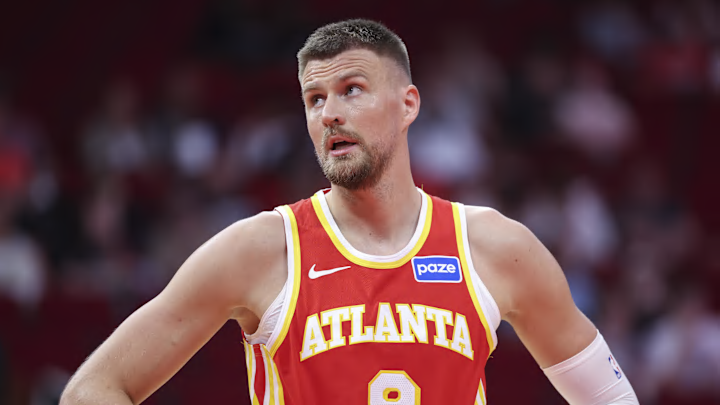The Atlanta Hawks are officially back after a disheartening start to the season, winning three of their last four games despite Trae Young’s absence. The turnaround can largely be attributed to their emphasis on limiting opponents’ fast break opportunities, as they have leaped from one of the worst transition defenses in the league to the top 10 over the past four games.
While this change was paramount to their improved fortune, Atlanta still has to address another critical weakness that could plague them against better competition: their catastrophic failure on the glass.
Through eight games this season, the Hawks have posted an offensive or defensive rebounding rate above the 50th percentile just twice. In English, the Hawks are grabbing fewer boards on both ends of the floor than expected, losing the rebounding rate battle a whopping 88% of the time.
There are a few culprits to assign the blame to, but Kristaps Porzingis is most responsible. He’s been a weak rebounder throughout his career, so this comes as no surprise, but it is an area Atlanta must address. In Boston, a collective rebounding effort led by star forward Jayson Tatum’s elite ability on the glass was enough to overcome Porzingis’s individual shortcomings.
Atlanta must follow Boston’s approach to shoring up their rebounding
Porzingis isn’t magically going to become a better rebounder; his limitations on the boards stem from the unique frame that has enabled his successful career. His unusually high center of mass, AKA his high hips, makes it easy for opponents to obtain leverage by getting low to knock the Latvian star off balance.
Of course, you can’t just not play Porzingis, as his value in other areas of the game more than makes up for his weak rebounding. Still, having a center who can’t rebound is a significant hurdle the Hawks must overcome through a sustained collective effort.
In the NBA at large, rebounding is usually deferred to the big men. Anomalies do exist, such as Russell Westbrook’s proclivity for stealing Steven Adams' rebounds and Josh Hart’s remarkable motor. But for the most part, there isn’t much the backcourt members can do if their matchup isn’t crashing the paint.
The Hawks must be an exception to this phenomenon if they plan to solve their rebounding woes. They have the size and physicality around Porzingis to make a meaningful contribution on the glass, even after Young returns. Like their transition struggles, Atlanta’s path to solving this problem requires two simple things: attention and effort.
Perhaps “solving” their problem is an overstatement. Atlanta will never be a dangerous team on the glass while starting a weak rebounder at the five. Regardless, if they can simply improve to an average team on the glass, they will be well-positioned to handle the challenging NBA schedule ahead.
